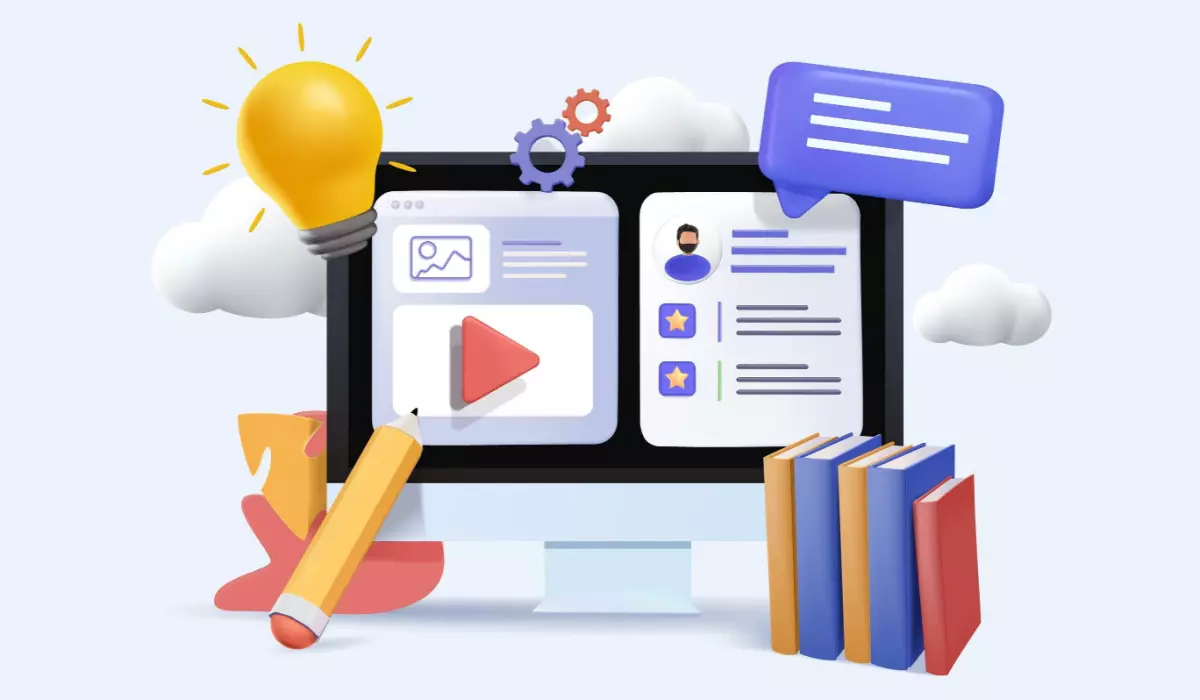There’s a quiet shift happening in how people approach skill development and income generation. The traditional model—going to school for years, then entering the workforce—still holds value, but it’s no longer the only path. More individuals are choosing to earn while they learn, building both financial stability and expertise at the same time. This approach not only reduces the pressure of student debt or unpaid internships but also ensures that what you’re learning is immediately tested in real-world environments.
For entrepreneurs, freelancers, remote workers, and side hustlers, this model is especially powerful. It turns passive education into active experience, where every dollar earned is a data point in your personal growth chart. Whether you’re just starting out or looking to pivot into a new field, combining income with learning can accelerate your progress in ways that classroom-only learning simply can’t match.
Here are six strategies that not only generate income but also function as immersive educational experiences—each one designed to teach you something valuable while keeping your bank account afloat.
1. Freelancing in a Skill You’re Building
Freelancing remains one of the most accessible ways to learn by doing, particularly in fields like writing, design, programming, marketing, or video editing. The beauty of freelancing isn’t just in the flexibility it offers—it’s in the immediate feedback loop. Every client project becomes a mini-course in communication, time management, and technical execution.
Let’s say you’re learning copywriting. Instead of writing sample ads for fictional products, you pitch a small local business to write their website copy. They pay you a modest fee, and in return, you gain hands-on experience with real expectations, deadlines, and customer feedback. That single project teaches you more about audience tone, SEO basics, and revision cycles than weeks of theoretical study.
Platforms like Upwork, Fiverr, and Toptal make it relatively easy to start, even with limited experience. The key is to be transparent about your skill level while still delivering value. Many clients are happy to pay less for high-effort, responsive freelancers who are eager to learn.

Freelancing also teaches business fundamentals: how to set rates, write proposals, manage scope creep, and collect payments. These aren’t typically taught in formal education, yet they’re essential for long-term sustainability. Over time, you’ll develop a portfolio, refine your niche, and increase your rates—all while continuously improving your craft.
For those already employed, freelancing can serve as a side income stream while you experiment with new skills. A graphic designer by day might start taking logo design jobs at night to learn branding strategy. A teacher might offer tutoring services online to explore educational content creation. The overlap between earning and learning becomes a compound effect.
2. Creating and Selling Online Courses
Teaching is one of the most effective ways to solidify your own understanding of a subject. When you create an online course, you’re forced to organize your knowledge, identify knowledge gaps, and communicate ideas clearly. And if you sell it, you’re also learning about product development, marketing, and customer service.
The idea of creating a course might feel intimidating if you’re still learning yourself, but the truth is, you don’t need to be an expert to teach. You just need to be one step ahead of your audience. If you’ve recently learned how to use Notion for productivity, for example, you can create a course for absolute beginners. Your fresh perspective is an asset, not a limitation.
Platforms like Teachable, Udemy, and Skillshare allow you to publish courses with minimal upfront cost. You can start small—a 30-minute class on basic Excel formulas or how to start a morning journaling habit—and reinvest the earnings into better equipment or advanced training.

As you receive feedback from students, you’ll uncover areas where your teaching (or your own knowledge) falls short. This creates a natural feedback loop: teach → get feedback → improve → teach again. Over time, this process deepens your mastery far beyond surface-level familiarity.
Additionally, course creation exposes you to digital marketing principles. You’ll learn how to write compelling sales copy, build email lists, and leverage social media to drive traffic. These skills are transferable across industries and can become valuable income streams on their own.
Some creators even use course sales as a way to fund further education. For instance, a self-taught web developer might create a beginner HTML/CSS course and use the profits to enroll in a more advanced JavaScript bootcamp. The income doesn’t just support living expenses—it fuels the next phase of learning.
3. Participating in Paid Internships or Apprenticeships
While unpaid internships are still common in some industries, paid apprenticeships and internships are gaining traction—especially in tech, trades, and creative fields. These roles are unique because they’re structured to teach while you contribute meaningful work.
Take software development apprenticeships, for example. Companies like GitHub and Microsoft offer programs where participants work on real codebases under mentorship. You’re not just observing—you’re writing code, attending stand-ups, and receiving performance reviews. The salary might not match a full-time developer’s pay, but it’s enough to cover living costs while you gain industry-standard experience.
In the skilled trades, apprenticeships in electrical work, plumbing, or HVAC are often fully paid and last several years. Organizations like the U.S. Department of Labor support registered apprenticeship programs that combine on-the-job training with classroom instruction. You earn a paycheck while working toward certification—no student loans required.

What makes these programs powerful is the dual nature of the experience: you’re both a learner and a contributor. Mistakes are expected and treated as learning opportunities, not failures. This reduces the fear of incompetence that often holds people back from starting.
For career changers, paid apprenticeships can be a low-risk way to break into a new field. A former retail worker might enter a digital marketing apprenticeship and, within a year, transition into a full-time role. The income provides stability, while the structured training builds credibility.
Even if formal programs aren’t available in your area, some companies are open to creating informal apprenticeship-style roles. A freelancer might hire a junior assistant at a reduced rate in exchange for mentorship. A small business owner might take on a “growth apprentice” to help with social media, customer support, and analytics. The key is to position yourself as someone eager to learn and contribute in exchange for guidance and compensation.
4. Starting a Niche Blog or Newsletter
Writing about what you’re learning forces you to process information deeply. When you explain a concept in your own words, you uncover gaps in your understanding. Publishing that writing publicly adds accountability—and the potential for income.
A niche blog or newsletter focused on your learning journey can attract an audience of people at a similar stage. For example, someone learning data science might start a Substack newsletter documenting their progress with Python, machine learning models, and project challenges. Over time, readers begin to follow not just for the content, but for the authenticity of the journey.

Monetization can come in several forms. Once you’ve built an audience, you can:
- Offer paid subscriptions for deeper dives or templates
- Partner with relevant tools (e.g., data visualization software) for affiliate marketing
- Sell digital products like cheat sheets or project kits
- Attract sponsorships from companies targeting your niche
Platforms like Substack, Ghost, and ConvertKit make it easy to start and scale. The process of growing an audience teaches you SEO, content strategy, audience segmentation, and email marketing—all valuable skills in today’s economy.
More importantly, the act of writing sharpens your thinking. You begin to notice patterns in your learning, identify what works and what doesn’t, and develop a personal framework for problem-solving. This reflective practice is rare in traditional education but essential for mastery.
A blog or newsletter also becomes a living portfolio. Employers and clients often value consistent, public output more than a resume full of vague descriptions. When they see that you’ve been analyzing real-world problems and sharing insights weekly, it signals curiosity, discipline, and communication skills.
Some creators have turned learning-focused newsletters into full-time businesses. For instance, Lenny’s Newsletter started as a way for Lenny Rachitsky to explore product management and grew into one of the most influential resources in the tech industry. He now earns significant income through sponsorships and community offerings.
5. Building and Monetizing a Personal Project
There’s a difference between studying a skill and applying it to a real problem. Building a personal project—whether it’s an app, a tool, a community, or a content series—forces you to integrate multiple skills and confront real-world constraints.
Let’s say you’re learning web development. Instead of just following tutorials, you build a simple habit-tracking app and launch it on Product Hunt. You use HTML, CSS, and JavaScript to build the front end, and maybe a no-code backend like Firebase. You write copy for the landing page, set up analytics, and collect user feedback.
If even a few people sign up or pay a small fee, you’ve validated not just your technical skills, but your ability to solve a problem people care about.
 or indirect (using the project to attract freelance clients or job offers). Either way, the project becomes a case study in end-to-end execution.
Personal projects also teach resilience. You’ll face bugs, confusing error messages, and moments of doubt. But each obstacle you overcome builds confidence and competence. You start to see yourself not just as a learner, but as a builder.
Investors and hiring managers often look for evidence of initiative. A personal project shows that you can take an idea from concept to completion—something that’s hard to demonstrate through certifications alone.
For remote workers and side hustlers, personal projects can evolve into scalable businesses. A simple Notion template for freelancers might grow into a full productivity suite. A YouTube channel reviewing remote work tools might lead to affiliate income and brand partnerships.
The key is to start small and ship early. Perfection is the enemy of progress. A flawed but launched project teaches more than a perfect one stuck in your head.
6. Joining a Startup or Early-Stage Company
Working at a startup, especially in the early stages, is like earning a real-time MBA. You’re exposed to multiple functions—product, marketing, sales, operations—and often asked to wear several hats. This breadth of experience is difficult to replicate in larger, more siloed organizations.
Startups often hire based on potential rather than proven expertise, making them ideal for learners. They’re more willing to train someone who shows curiosity, adaptability, and hustle. In return, you gain exposure to fast-paced decision-making, limited resources, and high accountability.

Many early-stage companies offer equity or profit-sharing in addition to salary. While the financial upside isn’t guaranteed, it creates a strong incentive to learn quickly and contribute meaningfully. You’re not just an employee—you’re a stakeholder.
For example, a junior marketer at a seed-stage SaaS company might start by managing social media but quickly get involved in pricing strategy, customer interviews, and campaign analytics. Within a year, they’ve gained experience that would take years to accumulate in a traditional corporate role.
Startups also tend to have flatter hierarchies, which means you’re more likely to interact directly with founders and senior leaders. These conversations are informal but incredibly educational. You’ll hear about fundraising, product roadmaps, and customer churn—topics rarely covered in entry-level roles elsewhere.
Websites like AngelList, Wellfound, and Y Combinator’s job board specialize in startup hiring and often list remote-friendly positions. Many roles are open to candidates without formal degrees, focusing instead on demonstrated initiative and learning ability.
Even if the startup doesn’t succeed, the experience is rarely wasted. You’ll walk away with a network, a story, and a set of skills that make you more adaptable in any future role.
The Mindset Shift: From Consumption to Contribution
What ties these six strategies together is a fundamental shift in mindset—from consuming knowledge to contributing value. Traditional education often treats learning as a one-way transfer: expert to student, book to mind. But real mastery comes from application, iteration, and feedback.
When you earn while you learn, you’re not waiting for permission to be “ready.” You’re testing your skills in the real world, where outcomes matter. A typo in a practice exercise is forgettable; a typo in a client’s website copy is a lesson in precision.
This approach also reframes failure. In school, mistakes are often penalized. In these income-generating learning models, mistakes are part of the process. A failed course launch teaches you about market research. A rejected freelance proposal reveals gaps in your pitch. Each setback becomes a data point, not a dead end.
For jobseekers, this model builds a track record of initiative. For freelancers and remote workers, it creates multiple income streams. For entrepreneurs and investors, it offers low-risk ways to validate ideas. And for side hustlers, it turns spare time into compound growth.
Getting Started: The First Step Is the Same for Everyone
You don’t need a perfect plan to begin. You need one small action:
- If you want to freelance, send one pitch today.
- If you want to build a course, record a five-minute lesson on your phone.
- If you’re interested in an apprenticeship, search for one opportunity this week.
- If you want to start a newsletter, write one post and share it with three people.
- If you’re building a project, sketch the idea on paper and name it.
- If you’re targeting startups, update your profile on AngelList and apply to one role.
The goal isn’t to make money right away. It’s to start the cycle: learn → apply → earn → learn again.
Over time, the income you generate becomes a measure of your growing competence. But more importantly, it funds your freedom to keep learning—on your terms, at your pace, in the real world.
In a world where knowledge is abundant but application is rare, the people who thrive are the ones who do both at once. They don’t wait to be qualified. They become qualified by doing.







